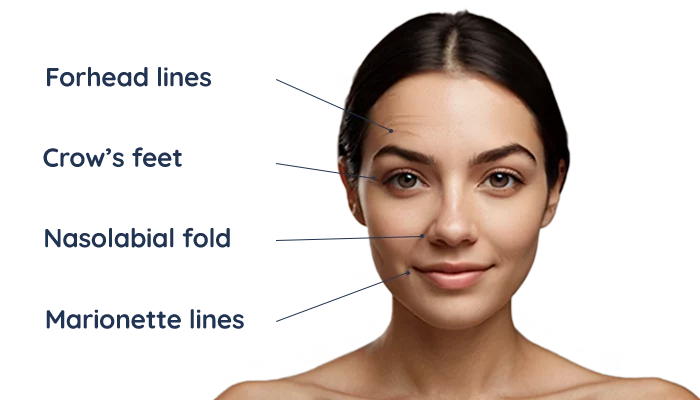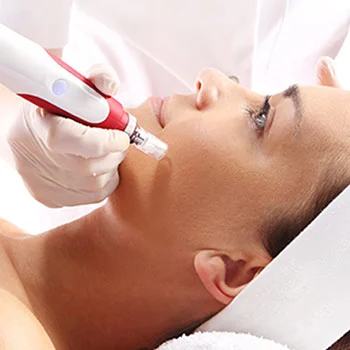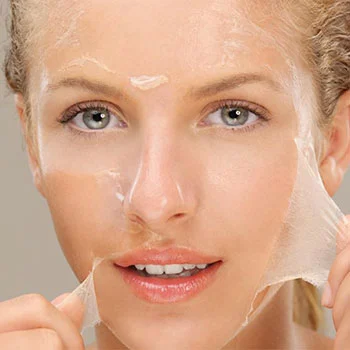What is dermabrasion?
Dermabrasion, sometimes called dermaplaning, as the name implies, is the process of abrading or planning layers of your skin so a new younger, healthier skin can resurface. It is a controlled surgical scraping of the skin that stimulates the healing process to produce collagen and new skin layers, a rejuvenating procedure to smooth out the skin and treat deep acne scars, surgical scars, injury scars, fine lines, wrinkles, hyperpigmentation, etc.
Dermabrasion is an old practice in human history, as old as 1500 BC when Egyptians used sandstones to remove scars. But it became popular in the early 1900s when German doctors successfully used rotating wheels and rasps to treat deep skin issues. Gradually, motorized devices came into practice in the 1950s and dermabrasion became what it is today.
In this article, we will explore the world of dermabrasion and all it has to offer so for more youthful, glowing skin.
Dermabrasion is a surgical procedure that requires anesthesia, either local or general. It can be done on its own or in combination with other procedures such as a chemical peel, facelift, and scar removal.
How it’s done
The procedure is performed in a doctor's office or outpatient facility by a board-certified dermatologist or plastic surgeon who is experienced in such treatments.
During the procedure, your eyes may be covered to protect them against splashes while your skin is covered with gentian violet stain to easily see and control the depth of abrasion. The skin will be stretched between two fingers when abrasion begins.
In a dermaplaning procedure, different types of devices (dermabraders) are used. Some of these dermabrasion instruments are motor-powered and others are manual.
In electric dermabrasion, which is sometimes called ‘electrobrasion’, the dermatologist removes the epidermis (outer layer of the skin) and the upper layer of the dermis (middle layer of the skin) using a dermabrasion machine with an abrasive tip that is rotating with high speed. In conventional manual dermabrasion, the specialist uses a piece of sandpaper, a rasp, or a blade to ‘sand’ or ‘plane’ the skin.
The rotating heads of the dermaplaning machines come in three types: wire brushes, diamond fraises, and serrated wheels. A wire brush is effective for deep scars and textural irregularities but working with them requires more experience and skill. Diamond fraises are coated with industrial diamond chips of varying degrees of coarseness and are easy to use even by less-experienced surgeons. Serrated (jagged) wheels are the early types of dermabrasion tools. They are less popular than the other two types and are only used by a small group of experienced specialists.
During dermabrasion, the specialist moves the rotating tip of the device across the target skin with a gentle pressure to remove the outer layer. They continue to do so until reaching the desired depth when the skin becomes red and pinpoint bleeding happens.
The procedure takes from a few minutes to over an hour depending on how large is the area that needs the treatment. You may need to have the procedure repeated or in stages if you have deep scarring or have a large area of skin you want to treat.
What skin problems can be treated with dermabrasion?
Dermaplaning can improve the appearance of the skin by addressing a wide range of skin problems including:
- Acne scars
- Surgical and traumatic scars
- Fine lines, wrinkles, and expression lines, including smoker’s lines (lip lines)
- Age spots (liver spots)
- Actinic keratoses (precancerous skin patches)
- Rhinophyma (thickened, reddened nasal skin)
- Tattoos
- Skin dullness
- Hyperpigmentation
- Large pores
- Chickenpox marks
Deep textural abnormalities such as scars from acne, injuries, and surgeries, lines on the forehead, wrinkles around the mouth, and sunspots are best treated with this option because other alternatives may be less effective. However, it is not as effective for the treatment of most moles, congenital skin defects, pigmented birthmarks, or burn scars.
Are you a good dermabrasion candidate?
If you have good general health, you can consider dermabrasion. However, there are some contraindications. If you have a dark skin tone, there is the risk of hyperpigmentation (darkening) or hypopigmentation (lightening) post-procedure because it can stimulate melanocytes, leading to disruption in pigment production. That is why dermabrasion is not recommended for dark, brown, or black skin colors.
If you are prone to keloid formation, you are not a good candidate either since scarring might occur after treatment. The procedure is also not a good choice for active acne or any pus-filled skin condition, frequent outbreaks of cold sores, and damages caused by radiation therapy.
If you have taken isotretinoin (Myorisan, Claravis, Accutane), the oral acne medication in the past year, you might be advised to delay this treatment.
Any underlying health condition that prevents or delays wound healing can complicate this procedure.
If you are pregnant, it is not the right time to consider this procedure as hormonal changes will influence the side effects, healing and results.
How to prepare for dermabrasion
Before the procedure, you will have a consultation session in which your doctor will examine your skin to evaluate if the procedure is right for you and if so, what technique and device is best for your skin.
You will be asked about any underlying health conditions that might need medication since they might interfere with the therapy and cause complications. You might be ordered to stop taking some medications such as NSAIDs and blood thinners as they can increase the risk of excessive bleeding during the procedure. You may also be asked to stop smoking as it decreases the blood flow to facial skin and disrupts the healing process.
Depending on your circumstances, you might receive antibiotic or antiviral medications to prevent infection. Retinoid cream such as tretinoin (Renova and Retin-A) might be given a few weeks before treatment to prepare the skin for the healing process.
You can also ask your questions and express your concerns with your doctor during the consultation so any doubt and confusion are dissolved. Tell your doctor about your expectations and understand the potential outcomes and risks.
If the procedure is to be performed with general anesthesia or IV sedation, it is recommended to arrange for someone to take you home after the procedure as driving is dangerous under influence of anesthetic drugs.
What is the recovery like?
After the procedure, the doctor may cover your skin with a nonstick moist dressing that will be changed in the follow-up visit the next day. Additionally, some ointment might be applied to the treated area.
The doctor will provide detailed instructions on how to care for your skin post-procedure to prevent complications. This will include avoiding sun exposure for 4-6 weeks after treatment as your skin is super sensitive and discoloration might occur. You will need to stay at home during this time after which you can resume working.
You might be given some pain medications such as ibuprofen or aspirin to cope with the moderate pain you feel after the procedure.
Redness and swelling are common for a couple of weeks. There might be a tingling or burning sensation as well. As the skin starts to heal, a crust will form over the treated area and there might be some itchiness
Strenuous exercise and drinking alcohol should also be avoided during this period as they often cause heat and flush on the face. Any sport involving a ball should be avoided to prevent contact with the face. The same goes for swimming in a chlorinated pool. For men, shaving immediately after dermabrasion should be avoided and when resumed, an electric razor should be used for the first time.
If your skin tone becomes blotchy, hydroquinone might be prescribed for bleaching purposes to even out the tone. Sun protection should be continued rigorously for the next 6 to 12 months to protect your new and sensitive skin.
Dermabrasion requires 1 to 2 weeks of recovery time, after which you can go back to work. The results will be visible after about 3 months when the redness has disappeared and youthful and smooth skin with a normal tone is formed.
How much does dermabrasion cost?
The average cost of dermabrasion is $1786 according to 2020 statistics from the American Society of Plastic Surgeons. However, depending on the size of the treated area, the experience of the doctor, and office location, it can range from $500 to $4000. This figure might be slightly less in Canada or more in Europe.
Keep in mind that dermabrasion requires downtime, time off from work, and prescribed skincare products that can increase the total cost.
Usually, there is no insurance coverage for cosmetic procedures unless dermabrasion is performed to remove precancerous skin patches.
What are dermabrasion side effects?
Due to the surgical nature of the dermabrasion procedure and the level of skin removal, there is a risk of infection and discoloration. However, they are very rare.
Some whiteheads might develop or skin pores might enlarge but both disappear after swelling is dissolved.
If swelling and redness get worse or itching intensifies, contact your doctor immediately to prevent scar formation.
Dermabrasion vs microdermabrasion?
Dermabrasion and microdermabrasion are often confused by many people. Although dermabrasion and microdermabrasion are named similarly and are of the same nature, they are quite different. The degree of abrasion in dermabrasion is much higher than in microdermabrasion, which makes it an invasive procedure.
Microdermabrasion is a very gentle version of dermabrasion, an exfoliation procedure that only removes superficial dead skin. So, unlike dermabrasion, microdermabrasion is a non-invasive procedure that causes no pain and requires no downtime and anesthesia.
Since dermabrasion addresses deeper layers of the skin, it produces more dramatic results than microdermabrasion. That said, a professional dermatologist can tell you which one of these procedures is best for your skin problems.



